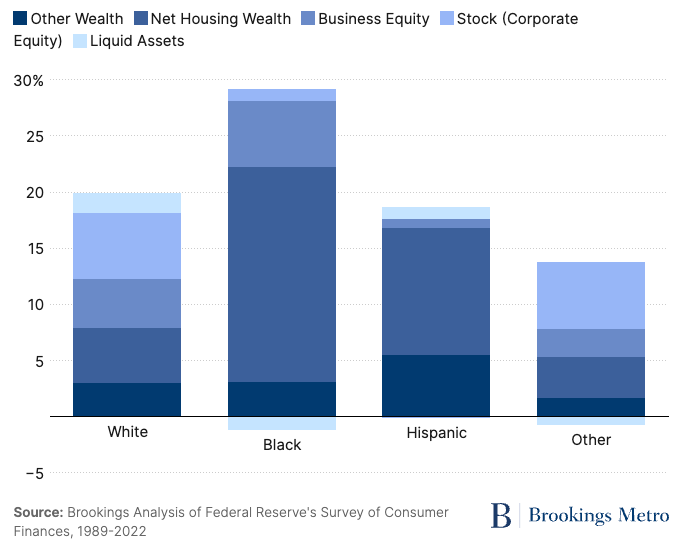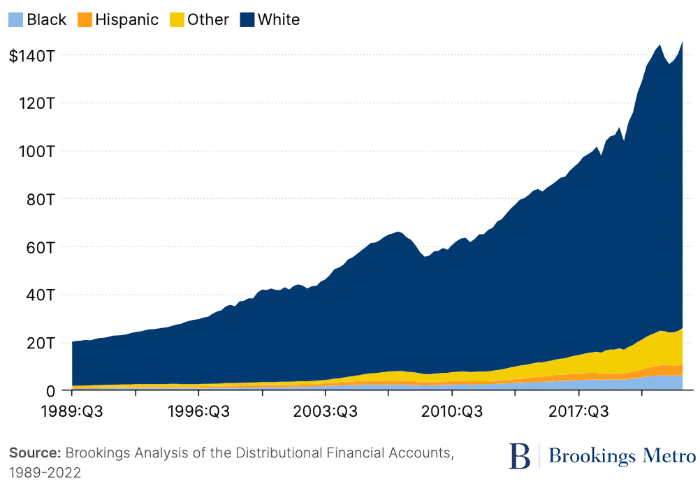Every week, we explore stories at the intersection of banking, data, and technology that may have been overlooked or offer a unique perspective.
This week, the trends in household wealth and persistent gaps by race, the problems that AI introduces when too much friction is taken out of things that used to be hard.
1. Household wealth disparity grew during Covid
The Brookings Institute presented an analysis of the Fed’s Survey of Consumer Finance,, particularly at how the economy and government policy impacted household wealth during Covid.
According to the latest data from the Federal Reserve’s Survey of Consumer Finances, the nation’s racial wealth gap increased during the COVID-19 pandemic. Between 2019 and 2022, median wealth increased by $51,800, but the racial wealth gap increased by $49,950—adding up to a total difference of $240,120 in wealth between the median white household and the median Black household.
Of note was the role homeownership played as a contra trend.
Net housing equity, followed by business equity, drove the largest portion of wealth accumulation for Black Americans from 2019 to 2022… However, racial disparities in homeownership continue to throttle this growth, with only 44% of Black individuals owning a home, compared to nearly 73% of white individuals—a vestige of discriminatory housing practices such as redlining and blockbusting.

The biggest impact, however, in driving a growing gap in wealth is stock and equity ownership.
The largest disparity in wealth growth was in stock equity, which made up nearly 30% of white wealth but only 4% of Black wealth… Since 1980, the profits made from selling off stocks—known as capital gains—has acted as a key driver of stock equity disparities, significantly concentrating wealth.
More here, including links to the Fed’s data.
2. AI and problems of scale
Benedict Evans presents an interesting take on the problem created not when AI makes new things possible but when it makes currently possible things trivially easy.
We’re all (I think) comfortable with the idea of ‘Wanted’ posters. We understand that the police put them up in their offices, and maybe have some on the dashboard of their patrol car. In parallel, we have a pretty wide deployment today of licence plate recognition cameras for law enforcement (or just tolls), and no-one has really noticed.
But what if every police patrol car had a bank of cameras that scan not just every number plate but every face within a hundred yards against a national database of outstanding warrants? What if the cameras in the subway do that? All the connected cameras in the city? China is already trying to do this, and we seem to be pretty sure we don’t like that, but why? One could argue that there’s no difference in principle, only in scale, but a change in scale can itself be a change in principle.
This has many non-obvious implications beyond law enforcement, including growth in fraud from deepfakes impersonations, and civil liberty concerns based in historical abuses.
And that is it for this Friday. Sometimes art imitates life just way more slowly. Click below to let us know how we did:

